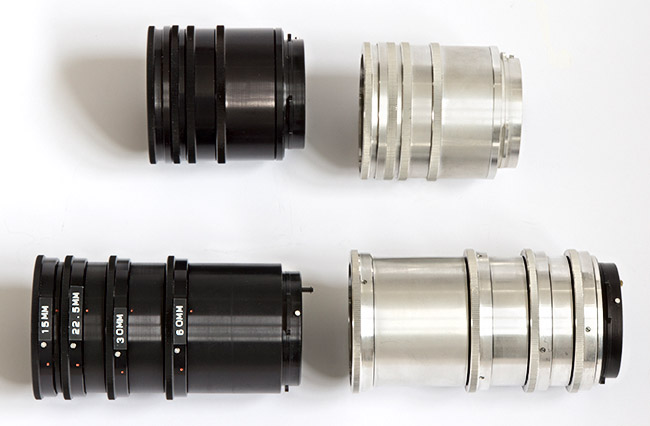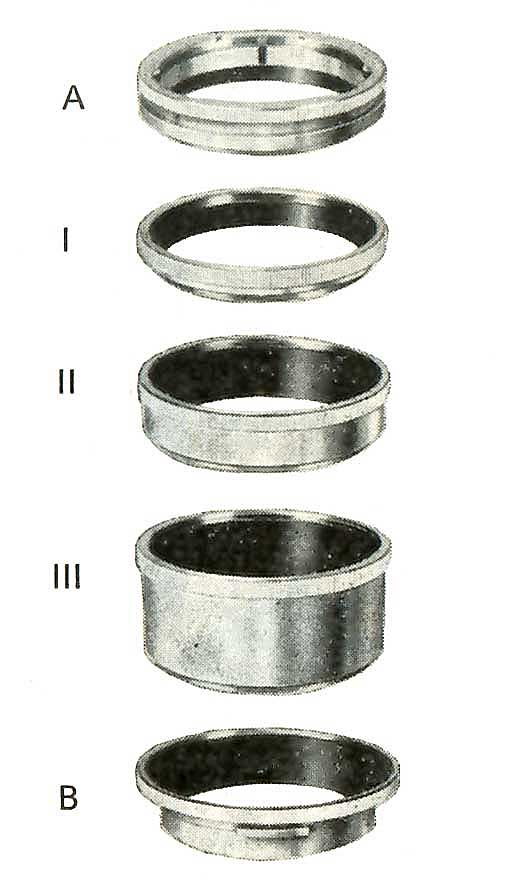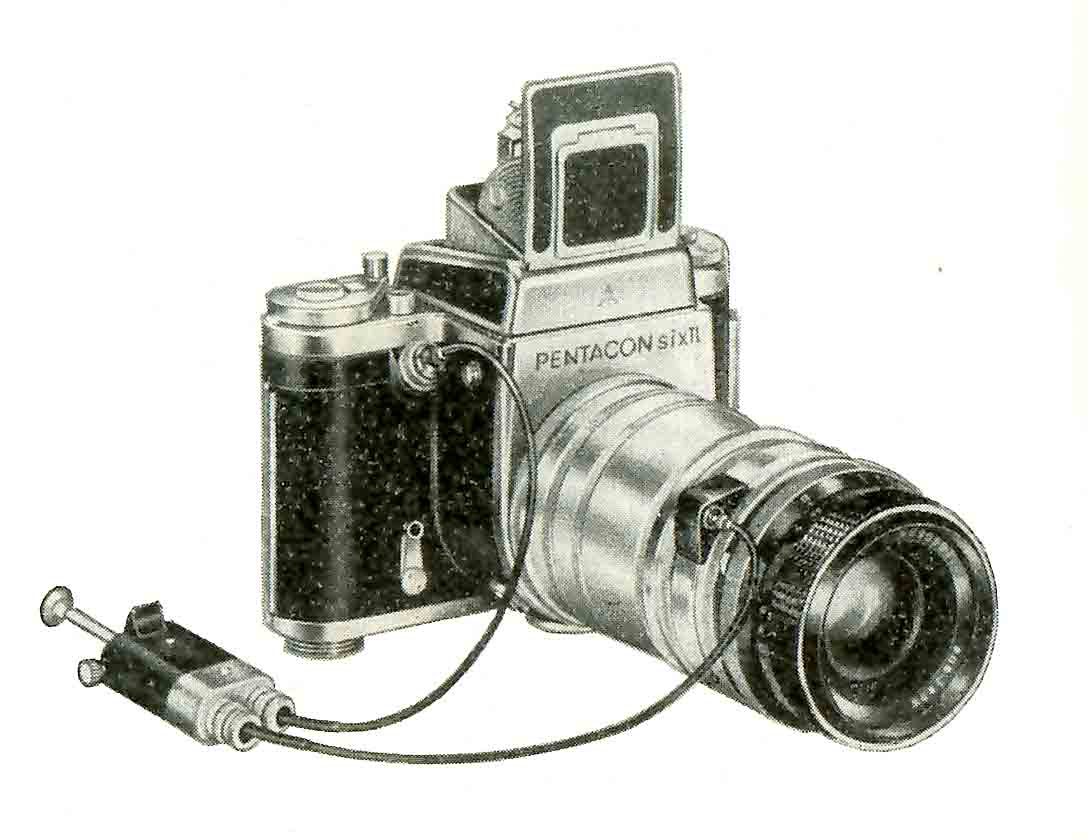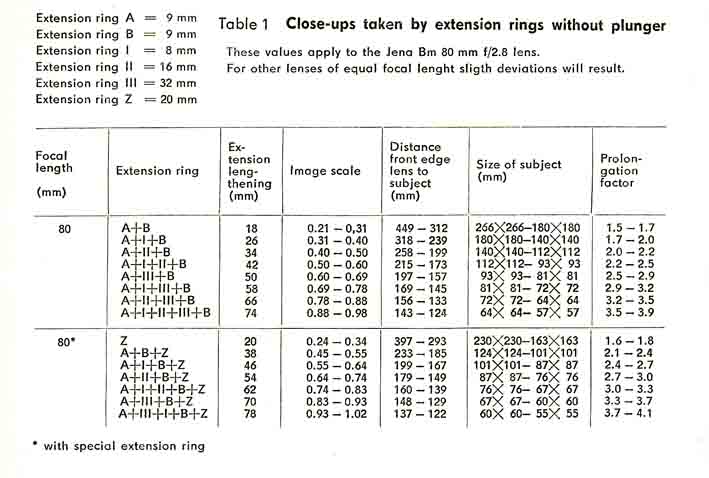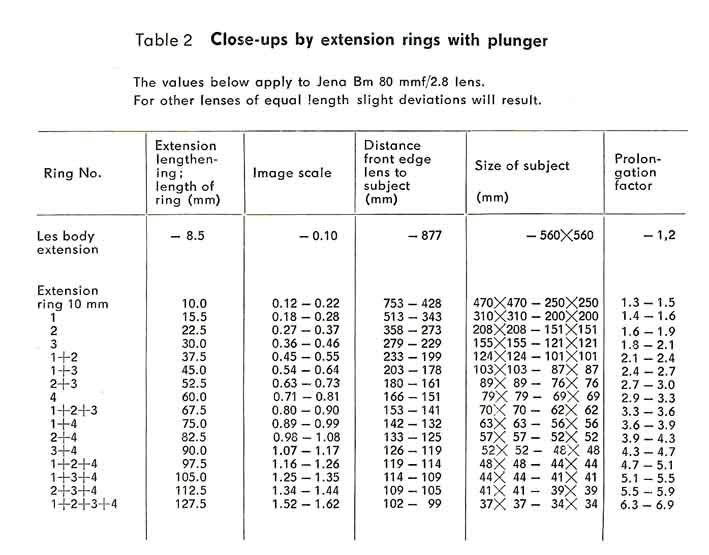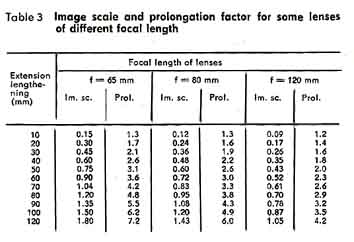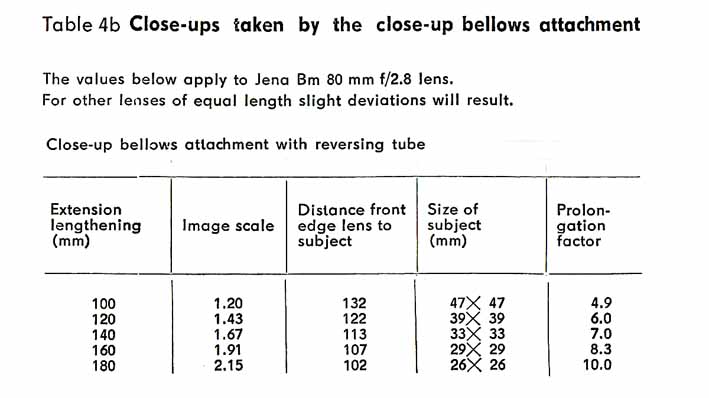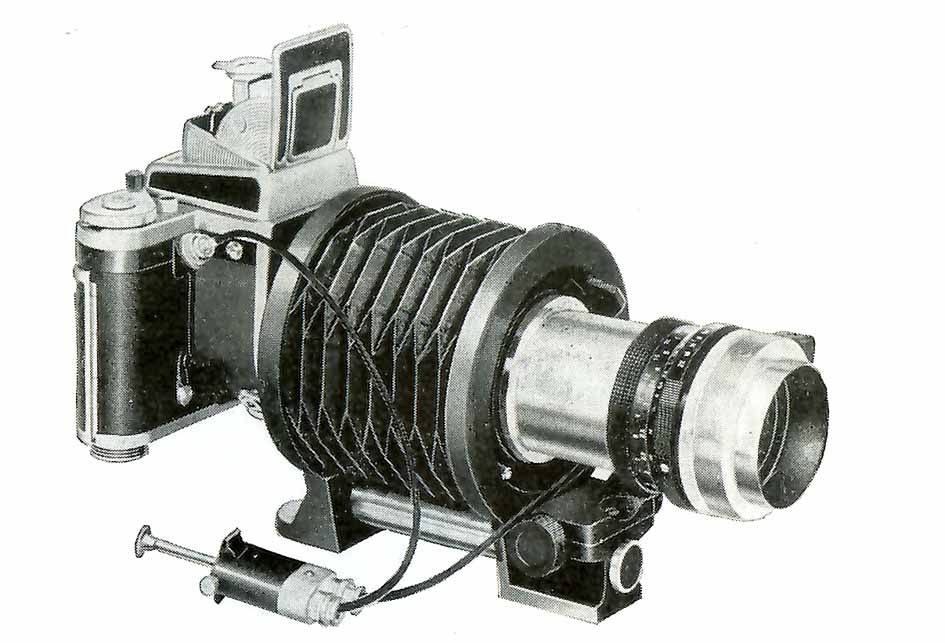|
Exposure
prolongation factors
Light readings from a hand-held meter will need
to be increased to allow for the increased
extension between the lens and the film.
The basic principle is
that the longer the extension used, the
weaker (dimmer) the light reaching the film.
It is necessary to compensate for this either by
using a slower shutter speed (to let the
existing amount of light in for longer) or
by using a larger aperture (to let more
light in for the existing time duration), or by a
combination of both of these changes. But
how much compensation is needed?
The Pentacon literature tells us, by giving us
what in English they call “prolongation
factors”. In German these are called “Verlängerungsfaktoren”.
A “prolongation factor” of “1” would be
meaningless, since it would mean “increase your
exposure by a factor of 1”. That is to say,
there would be no change at all.
However, a prolongation factor
of “1.5” would mean “increase your exposure
by 50%.”
Since each slower shutter speed increases the
exposure by 100% (i.e., it doubles the
exposure time), we can’t achieve a 50%
increase by changing the shutter speed. But
we can achieve this by opening up the lens
aperture by half a stop. For
instance, if our hand-held meter told us to give
1/125 sec at f/8, in order to achieve a 50%
increase in the light reaching the film, we would
give an exposure of 1/125 sec but open up the lens
aperture to the détente point on the lens between
f/8 and f/5.6. This is marked with a dot or
a narrow vertical line on the aperture ring of
many lenses.
An extension factor of 2.0 means “multiply
your exposure by a factor of 2” or “double
your exposure”. In the above example,
we could either change the shutter speed
to 1/60 sec and leave the lens aperture
unchanged or open the lens
aperture one full stop to f/5.6 and leave
the shutter speed unchanged.
Either of these changes would double the total
light intensity falling on the film.
Which change you choose depends on other factors:
- If the subject is moving, you may need to keep
the higher shutter speed, so you will open up
the lens aperture. However, this will
reduce the depth of field.
- Therefore, if the subject is not moving, you
will leave the lens aperture where it was and
use a slower exposure, instead. (I assume
that for macro work the camera is on a tripod!)
|
